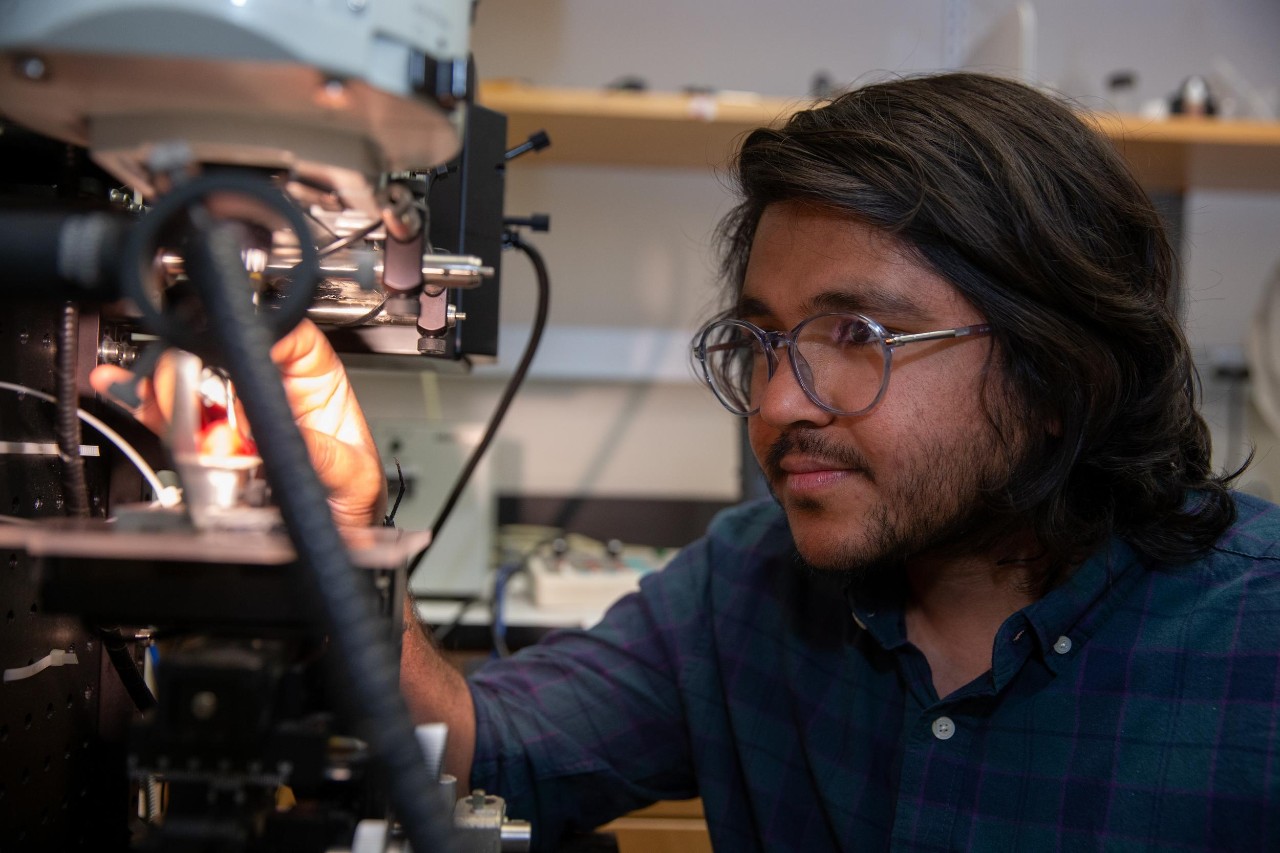
Optometry Today: Jumping spiders lose vision when hungry
UC researchers show how nutrition affects vision
Optometry Today, the magazine of the Association of Optometrists, shared a study by University of Cincinnati biologists who studied the role nutrition plays in the vision of bold jumping spiders.
UC College of Arts and Sciences Professor Elke Buschbeck and her co-authors studied photoreceptors in the eyes of bold jumping spiders, tiny eight-legged predators found across North America. The little hunters rely on their keen vision to stalk prey.
But researchers found that underfed spiders begin to lose photoreceptors that give them such good eyesight. Their findings could improve our understanding of the role that nutrition plays in common age-related vision problems such as macular degeneration.
The study was published in the journal Vision Research.
“Photoreceptors are energetically costly. It’s hard to keep up with their energy needs. If you deprive them of nutrition, the system fails,” Buschbeck said.
Read the Optometry Today story.
Featured image at top: UC doctoral student Shubham Rathore uses a custom ophthalmoscope in Professor Elke Buschbeck's lab. Photo/Andrew Higley/UC Marketing + Brand
More UC biology in the news

UC Professor Elke Buschbeck studies the vision of insects and spiders in her lab. Photo/Andrew Higley/UC Marketing + Brand
- Science Daily: Hungry Eyes: Spiders lose vision when they're starving
- New Atlas: Hungry spiders offer insights into nutrition
- Newswise: Hungry spiders lose vision, study shows
- Nature World News: Undernourished spiders lose important light-sensitive cells for vision
Related Stories
Smithsonian: UC finds pollution in ancient Maya city
July 2, 2020
Smithsonian Magazine examines research by University of Cincinnati that found toxic pollution in ancient Maya reservoirs.
Haaretz: UC study sheds light on environmental collapse
June 29, 2020
Haaretz and other international media report on UC's research into ancient Maya water pollution.
Cincinnati Edition: Did ancient Maya build parks?
July 20, 2021
UC biology professor David Lentz talks to Cincinnati Edition about their multi-disciplinary investigation of plants that grew along ancient Maya reservoirs more than 1,000 years ago.
